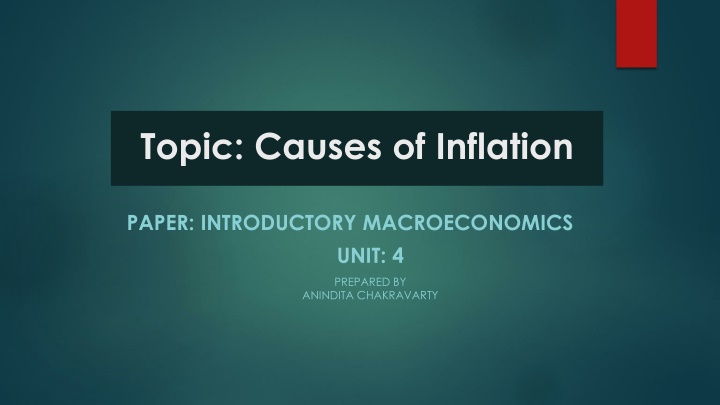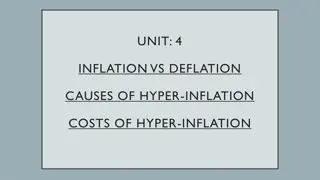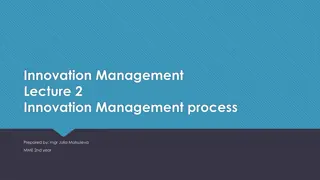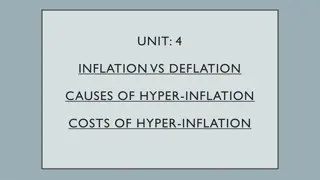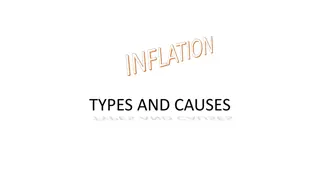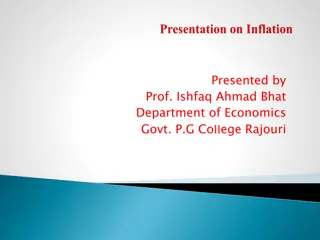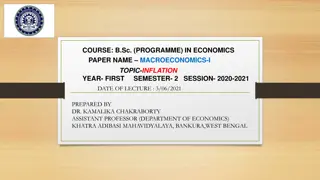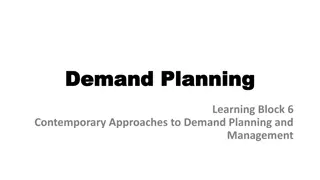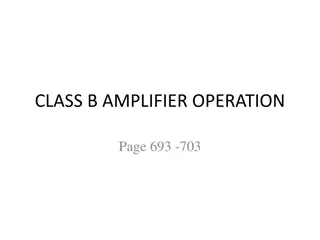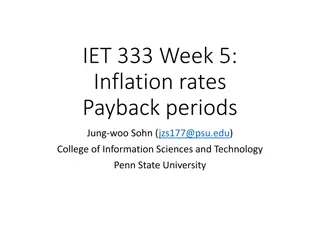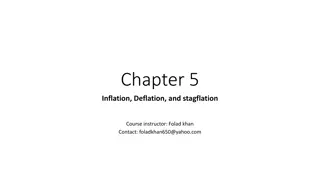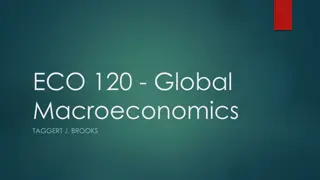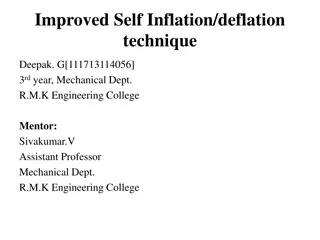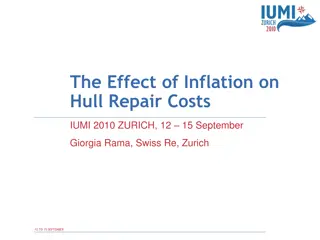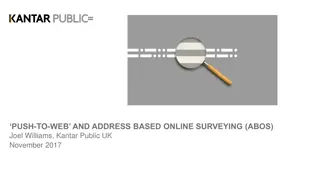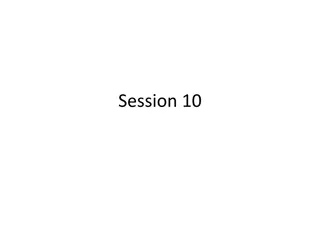Causes of Inflation in Macroeconomics: Demand-Pull vs. Cost-Push
This paper delves into the main causes of inflation - demand-pull and cost-push - in the context of introductory macroeconomics. Understand the mechanisms behind each type of inflation, their impact on prices, and how factors like consumer demand, supply costs, and full-employment levels influence inflation dynamics. Explore the relationship between aggregate demand and supply, and grasp the significance of fiscal policies and money supply in managing inflationary pressures. Dive into the diagrams illustrating these concepts and get ready to explore cost-push inflation in the upcoming sessions.
Download Presentation

Please find below an Image/Link to download the presentation.
The content on the website is provided AS IS for your information and personal use only. It may not be sold, licensed, or shared on other websites without obtaining consent from the author.If you encounter any issues during the download, it is possible that the publisher has removed the file from their server.
You are allowed to download the files provided on this website for personal or commercial use, subject to the condition that they are used lawfully. All files are the property of their respective owners.
The content on the website is provided AS IS for your information and personal use only. It may not be sold, licensed, or shared on other websites without obtaining consent from the author.
E N D
Presentation Transcript
Topic: Causes of Inflation PAPER: INTRODUCTORY MACROECONOMICS UNIT: 4 PREPARED BY ANINDITA CHAKRAVARTY
There are two main causes of inflation Demand Pull Cost Push Both are responsible for a general rise in prices in an economy But they work differently. Demand-pull conditions occur when demand from consumers pulls prices up. Cost-push occurs when supply cost force prices higher.
Demand-Pull Inflation Demand-pull inflation is the most common cause of rising prices. It occurs when consumer demand for goods and services increases so much that it outstrips supply. Producers can't make enough to meet demand. There are several circumstances that create demand-pull inflation. A growing economy affects inflation because when people get better jobs, they spend more. A discretionary fiscal policy- government either spends more or taxes less. Over-expansion of the money supply- not just cash, but also credit, loans, and mortgages.
Full-employment level of aggregate supply OYF is aggregate curve AS vertical shape. This is because after the level employment, of output cannot be increased. reached, supply takes a of full supply
EXPLANATION NOTE OF DIAGRAM Consider the Fig in which aggregate demand and aggregate supply are measured along the X-axis and general price level along the Y-axis. Curve AS represents the aggregate supply which rises upward in the beginning but when full-employment level of aggregate supply OYF is reached, aggregate supply curve AS takes a vertical shape. When aggregate demand curve is AD1 the equilibrium is at less than full- employment level where price level OP1 is determined. Now, if the aggregate demand increases to AD2, price level rises to OP2 due to the emergence excess of demand at price level OP1. It will be noticed that here the rise in price level has also brought about increase in aggregate output supplied from OY1 to OY2. If the aggregate demand further increases to AD3, the price level rises to OP3 under the pressure of more demand. But since he aggregate supply curves is yet sloping upward, increase in aggregate demand from AD2, to AD3 has -used the increase in output from OY2 to OYF If aggregate demand further increases, say to AD4 only price level raises to OP4 with output remaining constant at YF. OYF is the full-employment level or output and aggregate supply curve is perfectly inelastic at YF.
In the next class, we will continue with Cost-push inflation THANK YOU THANK YOU
